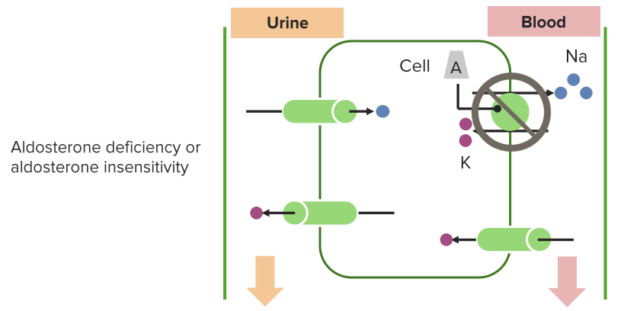
+or+bicarbonate..jpg)
Toxins, including ifosfamide (more commonly causing pRTA than dRTA), lithium carbonate and amphotericin B.While it is a consequence of dRTA, it can also be a cause related to calcium-induced damage of the cortical collecting duct. Other hereditary causes include mutations of subunits of the apical proton pump vH +-ATPase, which are transmitted in an autosomal recessive fashion, and may be associated with sensorineural deafness. The South East Asian cases are associated with more severe hypokalemia. Hereditary causes include mutations of Band 3 the basolateral bicarbonate transporter of the intercalated cell, which may be transmitted in an autosomal dominant fashion in western European cases, or in an autosomal recessive fashion in South East Asian cases.Hypokalaemia is often severe in these cases.

Classically Sjögren's syndrome, but it is also associated with systemic lupus erythematosus, rheumatoid arthritis and even hypergammaglobulinemia. Causes ĭiagram depicting an alpha intercalated cell with the apical proton pump and basolateral band 3 (kAE1) Aldosterone causes increased resorption of sodium and loss of potassium in the collecting duct of the kidney, so these increased aldosterone levels cause the hypokalemia which is a common symptom of dRTA. ĭRTA commonly leads to sodium loss and volume contraction, which causes a compensatory increase in blood levels of aldosterone. The symptoms and sequelae of dRTA are variable and range from being completely asymptomatic, to loin pain and hematuria from kidney stones, to failure to thrive and severe rickets in childhood forms as well as possible renal failure and even death.

Nephrocalcinosis (deposition of calcium in the substance of the kidney).Urinary stone formation (related to alkaline urine, hypercalciuria, and low urinary citrate).Normal anion gap metabolic acidosis/acidemia.This leads to the clinical features of dRTA: Because renal excretion is the primary means of eliminating acid from the body, there is consequently a tendency towards acidemia.


 0 kommentar(er)
0 kommentar(er)
